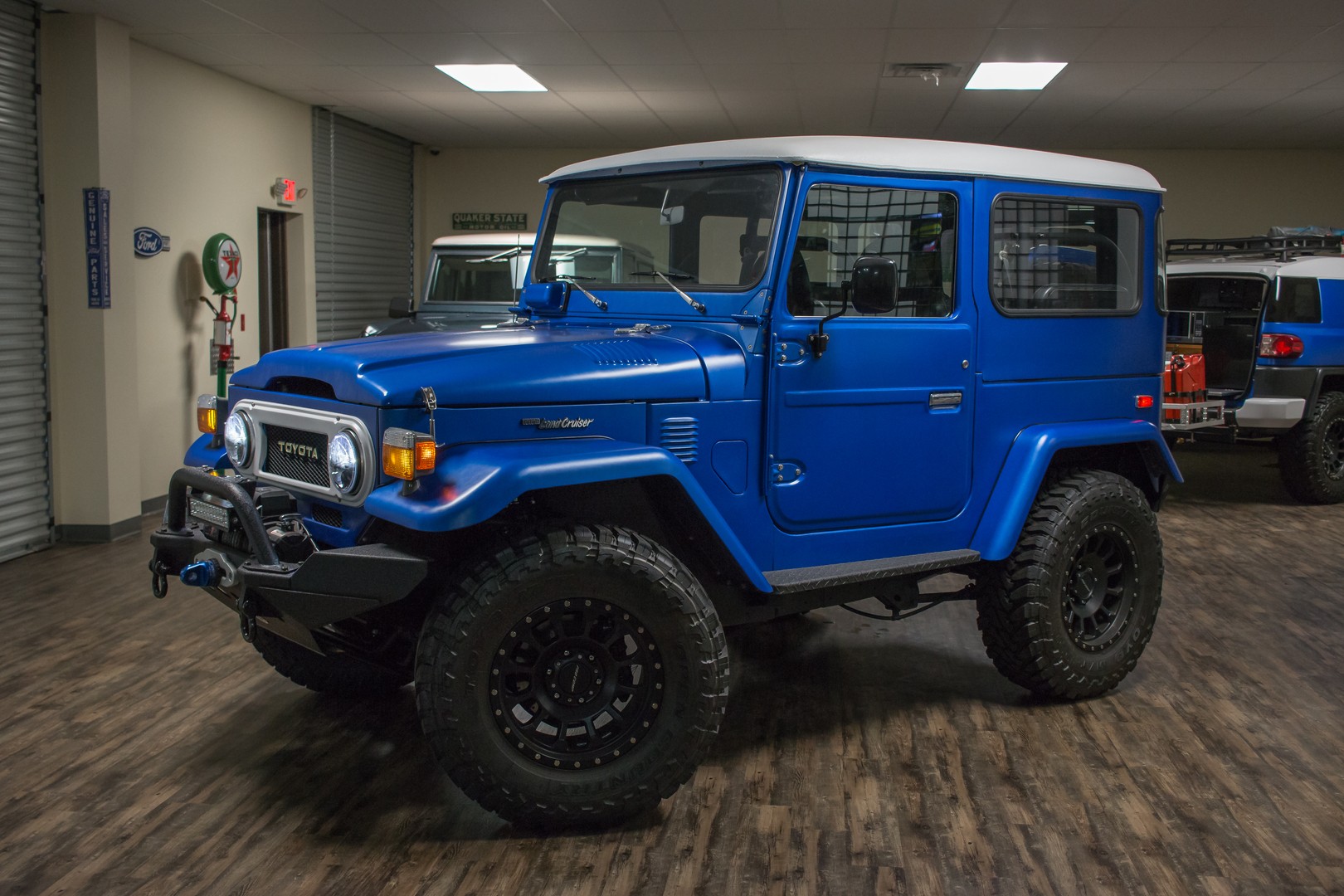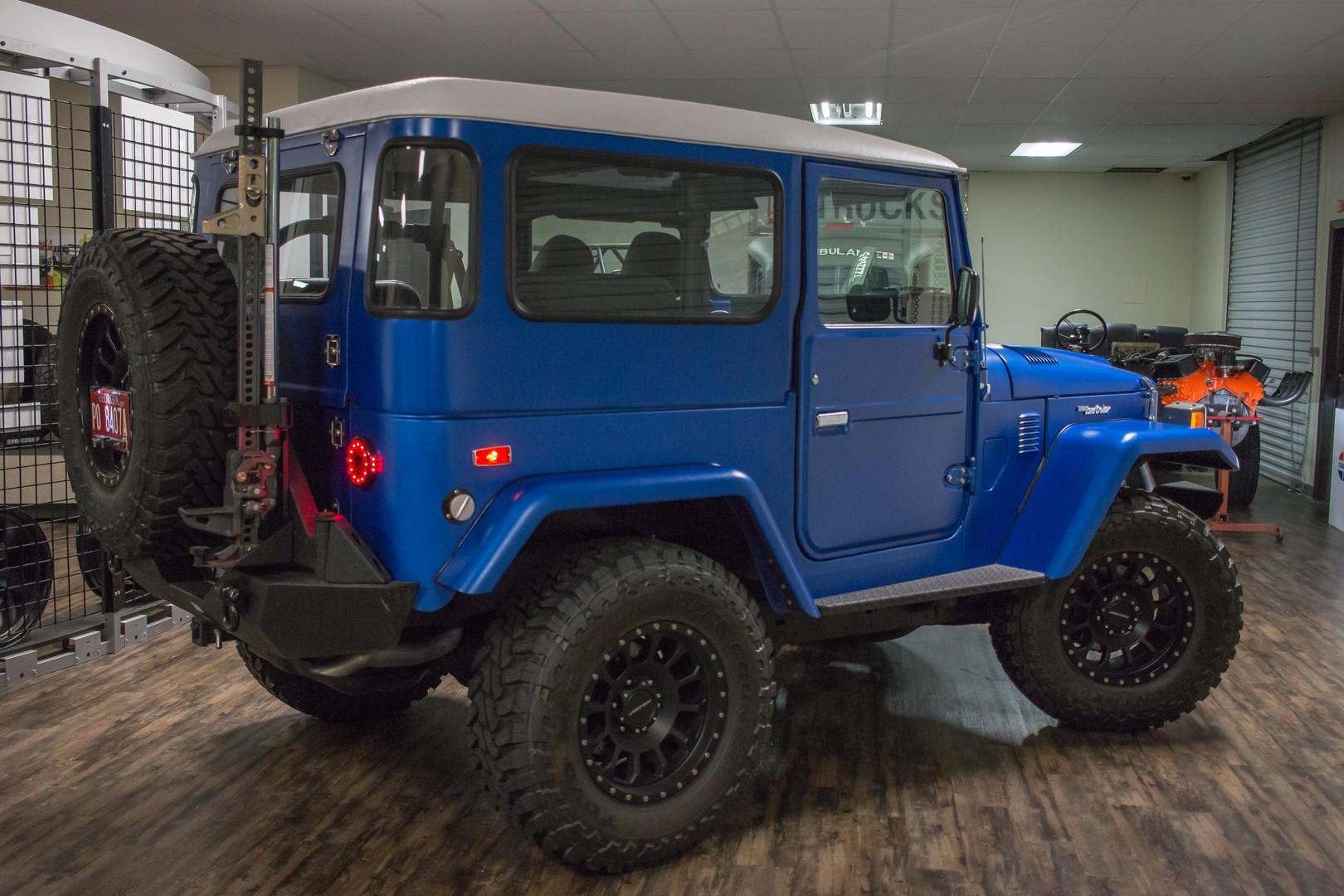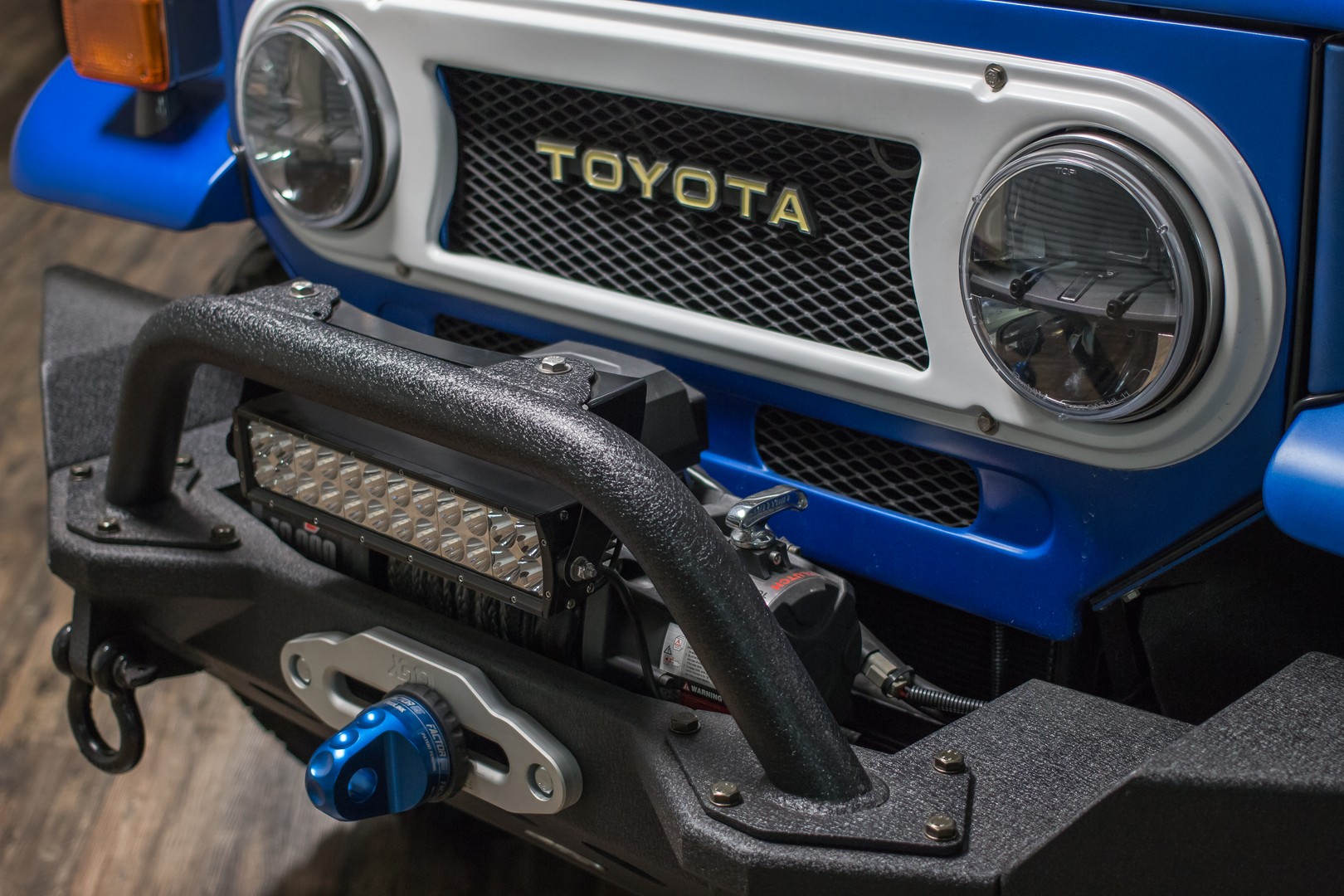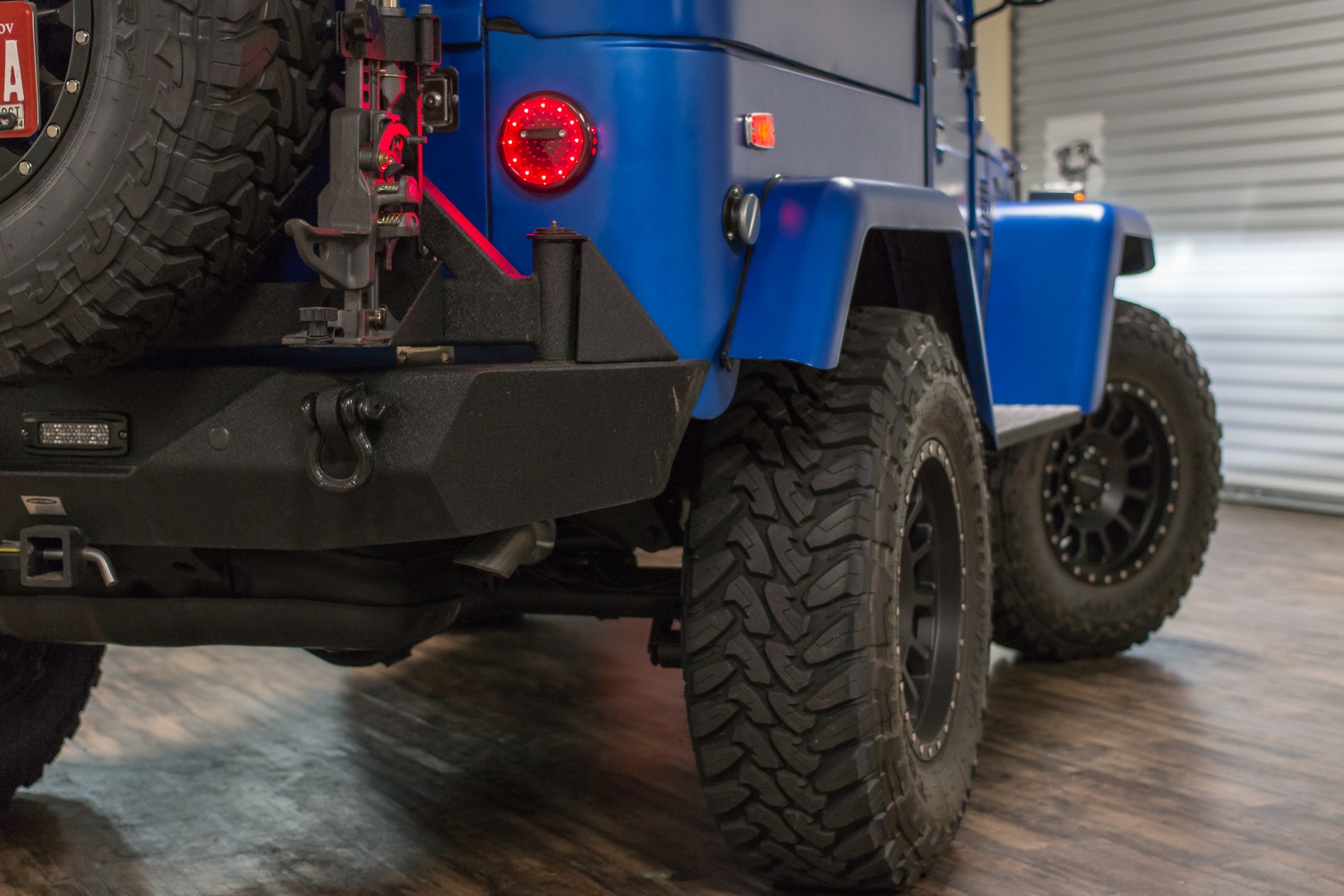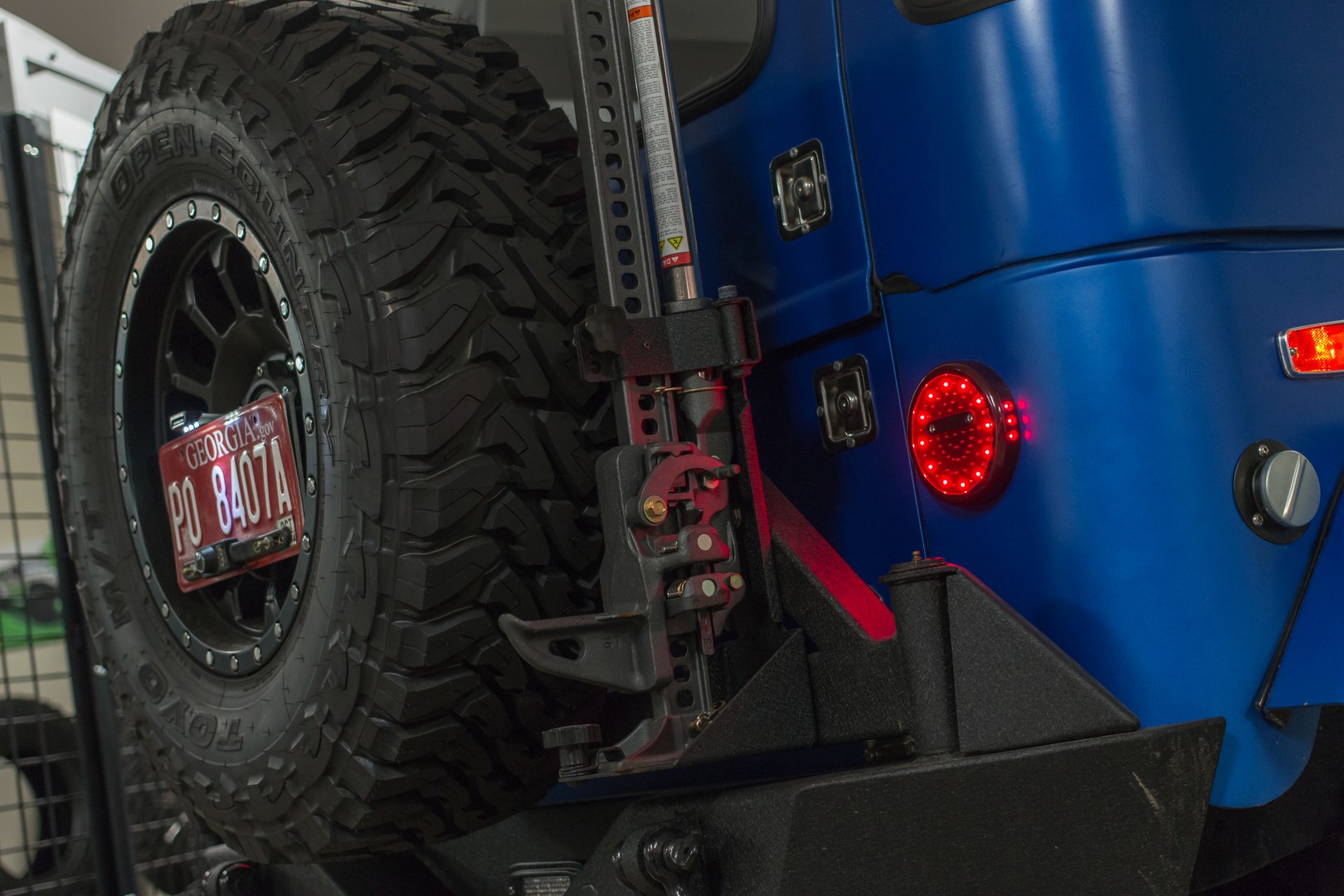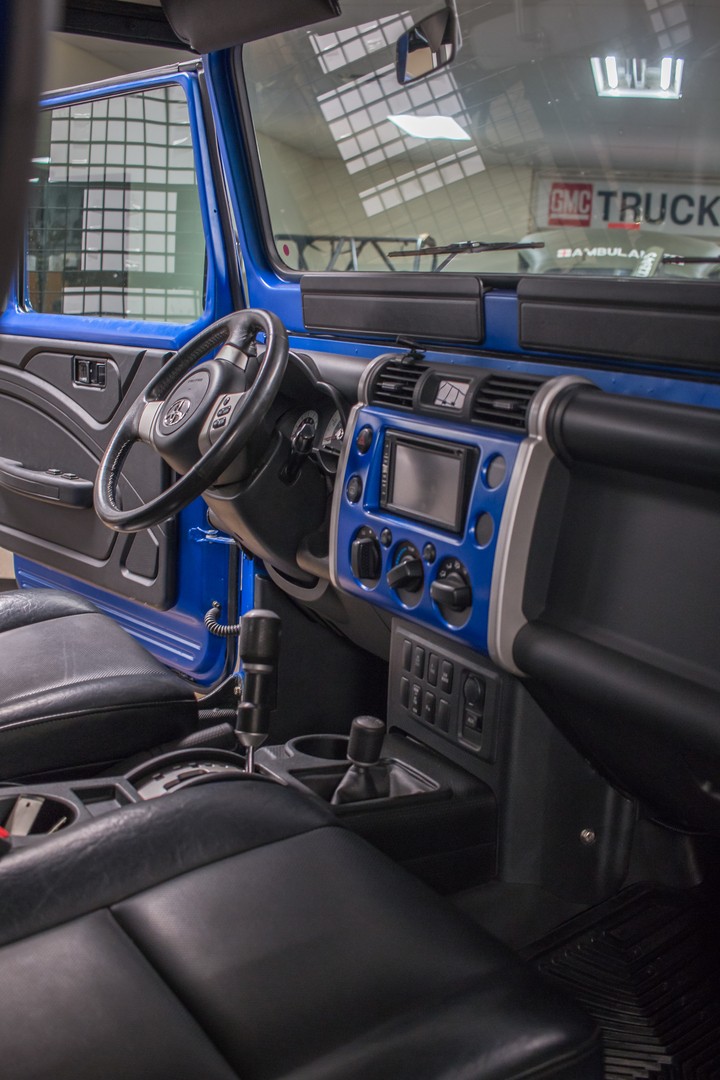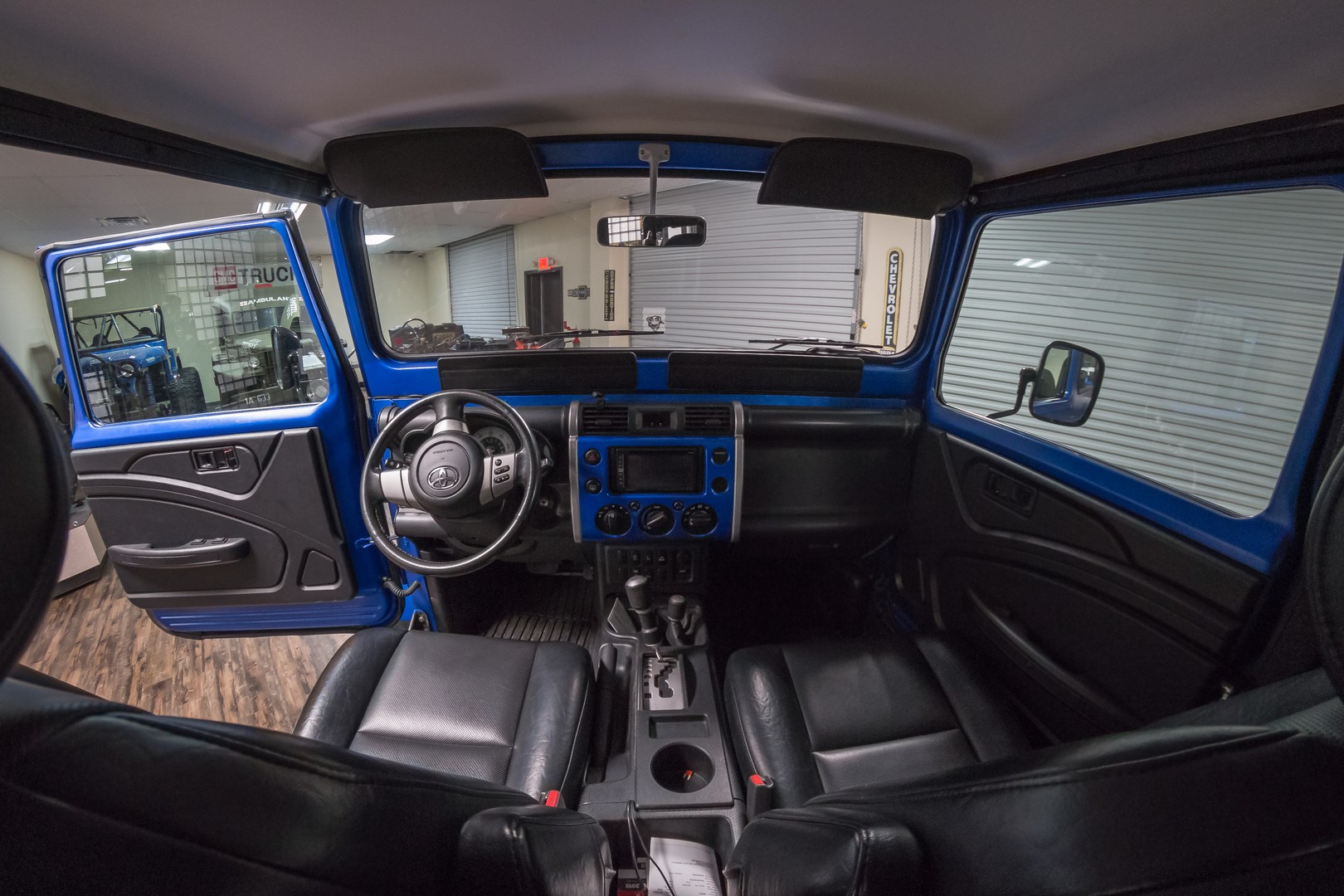1974 TOYOTA FJ40 RESTOMOD
The Classic Styling of the Toyota FJ40 has created an almost cult like following for these early SUV’s. At TWC we wanted to respect the classic design while offering the driver a better and safer driving experience.
Staying true to the brand we choose to integrate a 1974 Toyota FJ40 with a 2008 Toyota FJ Cruiser. Our FJ40 was purchased as a work in progress project that its owner had grown stale on. The FJ Cruiser had been in a light front end accident which made it perfect for our needs.
Now all we had to do was integrate the best these two donors had to offer. After adding a few extras and we had a classic looking, well driving FJ40/Cruiser.
By combining the classic styling (the FJ40 body) with up to date automotive technology (the FJ Cruiser chassis), we have created a custom-built 4-wheel drive classic that truly does ride and drive as good as it looks.For a build like this we need two donor vehicles, the classic (1974 FJ40) and the modern (2008 FJ Cruiser). We purchased the FJ40 for the body. The FJ Cruiser is really the heart of the project. The Cruiser has 90k miles on it. These Toyotas are known for their reliability and their longevity so the mileage didn’t concern us.
We changed all the fluids, belts, and hoses, upgraded the brakes with new drilled and slotted front and rear rotors and pads, installed new CV axles, new plugs, air filter, and installed a new MBRP exhaust system. (Suspension, wheels/tires, and lights are also new) We have kept as much of the functionality offered in the FJ Cruiser as Possible. The dash and steering wheel functions, four wheel drive, seating and drivability of the vehicle are all from the FJ Cruiser. We’ve redone the interior with a custom design that blends the modern and classic seamlessly.
We have documented the build so you can see what went into the integration of these two FJ’s. As you will see in the photos it wasn’t a matter of just taking off the FJ Cruiser body and putting the FJ-40 body on the FJ Cruiser chassis.
After a few days of measurement and planning we started out by cutting away the parts of the FJ Cruiser that we were not going to need. What remained was the complete Chassis including the frame, suspension, and running gear. On the inside we kept the front floor pan, firewall, dash, steering and pedal assembly, center console and the front seating. Before we start to fit the FJ-40 body we need to address the differences in the two wheelbases. The FJ Cruiser is 16” longer and 6” wider then the FJ-40 was. The width was resolved with trimming and installing OE style front fenders and rear flares that are 3.5” wider than stock. (This also supports the added room we needed to fit 35” tires and a 2” lift kit.)To address the wheelbase issue we cut the frame and removed the unneeded inches, we sleeved it and welded in back together, than shortened lines, exhaust, and the rear driveshaft. We had to modify the gas tank and move it from the driver’s side of the Cruiser to the rear. As a result we needed to move the gas filler neck from the FJ40 stock location.
It was now time to start fitting the FJ-40 body. We started with the front cowl and windshield. To get the positioning we were looking for, we need to cut the FJ Cruiser dash and reroute the heat and air ducts. After a few days of cutting and plumbing we had our front cowl positioned which provided our start point to build from. Next we fabricated dash mounts to fix the FJ Cruiser dash to the FJ-40 front cowl. We than dry fit our hood, fenders and grill. We changed out the FJ Cruiser radiator because it would not fit under the FJ-40 hood. We choose a Tacoma radiator to take its place. (We were able to use the FJ Cruises AC condenser mounted in front of the new radiator.) We removed the engine fan for space reasons and installed a dual Flexalite electric fan and temperature sensor.
Things under the hood fit but had to be repositioned a bit. We trimmed the inner fenders and built new inner fenders that we integrated with the Cruiser chassis. Than we re-mounted the under the hood components along the new inner fender wells. (We moved the battery to a compartment that we build under the floor behind the driver seat because of space limitations.)
Although we tried to keep the FJ-40 look and feel as close to stock as possible, we felt that we could improve the original look of the long frame rail that hung out in front of the grill, so we created a new integrated frame horn that was designed to fit a Smitty Built Mod bumper with med length end pieces. We finished it off with a S/B 9.5K synthetic rope winch providing an integrated look with the front grill.
With the front half of the integration complete we turn our attention to the back section of the build. We decided to purchase an aluminum tub, tailgate, fenders, fender flares and side steps for this build. This allows us to section the build and start with better than new components that will not rust over time. As we fit the rear section and installed the new aluminum fender flare we got the width necessary to fit the aftermarket wheels and tires. We installed MHT 17” wheels with Toyo Open Country MT’s tires.We purchased an aluminum upper and lower tailgate to continue that better than new look and feel. (The lower tailgate has an integrated storage compartment.)
With the rear half of the cab fitted we built body mounts and affixed the rear section to the front cowl. The hard top was fitted as well as the doors and the tailgate. We removed the hardtop windows to ready for paint.For sound deadening and durability we applied spay on liner to the tub floor inside and under side, the outside of the roof, the inside walls of the hardtop the step sides and the inside of the tailgate.
We decided to retain the rear jump seats and had the frames powder coated and recovered to match the front seats. All new rubber weather stripping was installed on all windows and doors, as well as new felt for the door windows.Once completely dry fit if was time to disassemble and send out for paint, spay on liner, and interior. We had the paint and bodywork completed in pieces rather than assembled. This allowed us to paint all surfaces and reassemble with rubber gaskets and seals between each panel.
We feel that this new FJ-40/Cruiser should be as comfortable on the inside as possible. That’s why it was out with the old and in with the new including Seats, door panels, headliner, floor mats and seat belt upgrades.With the integration of the FJ40/Cruiser body and classic complete we turn our attention to the suspension side of the build. The first thing we wanted to do was to beef up the suspension. We installed Fox 2” lift coil overs in the front and Fox shock and new coils in the rear, adding air bags to the coils for extra load handling.
As highlighted early we installed a Smitty Build Mod front bumper with a 9.5k lb. S/B synthetic winch and a 20” LED light bar. We also install LED headlights, taillights and new turn signals. We mounted a S/B rear bumper with spare tire carrier on the rear and a set of LED back-up lights.The jack, lug wench and recovery gear fit nicely in the tailgate storage compartment. When the interior was installed and we added power windows and door locks to the FJ40 doors.
It was now time to fill the gas tank and start our 500-mile shake down. We have put over 900 man hours into this build and have created a custom FJ40/Cruiser that looks and drives like a new vehicle.
With the FJ40/Cruiser complete we turned our attention to the perfectly good FJ Cruiser body that we removed from the chassis. We decided that a great use for it would be to turn it into a camper that can be towed behind the FJ40/Cruiser conversion. (Think about it: looks like an FJ40 towing an FJ Cruiser, pretty cool) We build a frame and floor and integrated the body on to it. We mounted a V style toolbox in front of the body to house the generator and batteries that power the camper. (The doors were wired so that the original power windows and door locks work.)
Inside we reinstalled a lot of the stock interior panels and built out all the amenities that you’d find in camper trailer. We install a raised platform with a queen size memory foam mattress, added a window style AC unit and a flat screen TV with a built in DVD player. In the rear a custom-built kitchen area was added including a small refrigerator, microwave, a conduction hot plate and storage. We used LED lighting for the interior lights and used the original Cruiser taillights for our trailer rear highway lights. (turn signals, brake lights and running lights).
We finished it off with a paint job and a set of wheels and tires that match the FJ40/Cruiser’s.
This TWC FJ40/Cruiser with matching Camping trailer as like know other. It looks like a fully restored FJ40, yet drives like an FJ Cruiser, because that is exactly what it has become, an FJ40/Cruiser.

